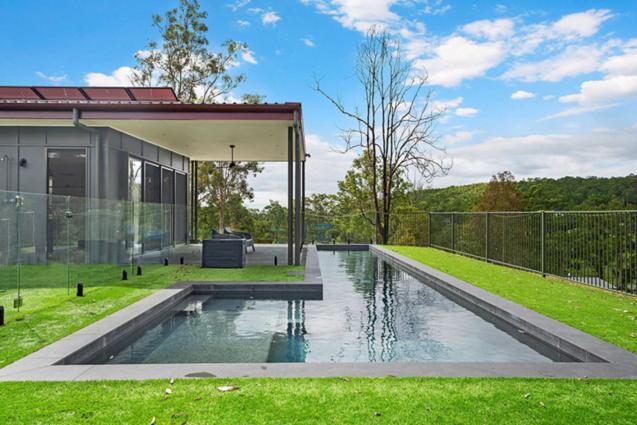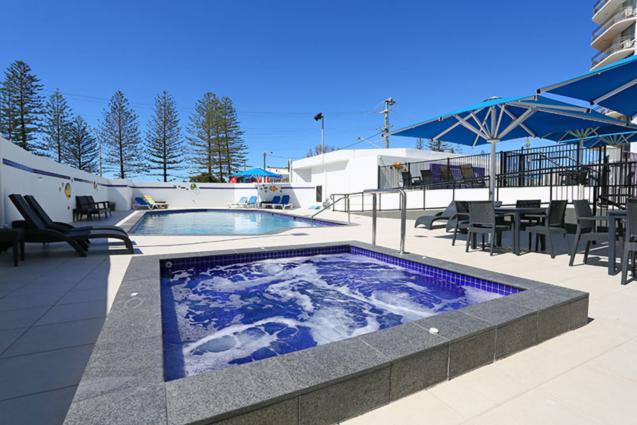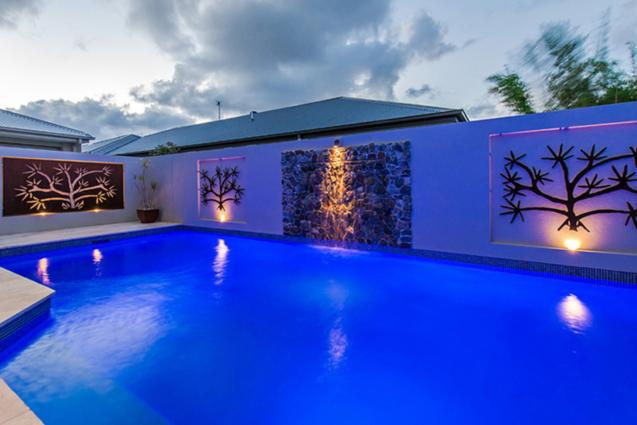
Concrete Pools: Advantages, Drawbacks and Construction Process
By Ecozen Pools + Landscapes|May 11, 2023
The decision to install a swimming pool in your home is in no way a minor one. It is one that can be pretty advantageous. There are different types of swimming pools available at different prices, but the price should not be an excuse to ignore how vital installing a swimming pool can be. Pools can dramatically change the entire look and feel of your home, from its value to its appeal, and they are one of the ultimate forms of entertainment for families. Sadly, though, the wrong swimming pool decision can negatively impact your home’s appeal and value. Plus, you will not get the benefits you envisioned before installing your swimming pool.
Swimming pools come in a variety of materials, including vinyl, fibreglass and concrete swimming pools, and the major differences include the materials, build process and associated costs. Choosing a concrete swimming pool for your home can be a great decision. given that concrete is renowned for its high degree of durability and longevity.
This article details the various benefits of building a concrete pool, the drawbacks, and the standard process involved in having one built.
What is a Concrete Swimming Pool?
As the name implies, a concrete swimming pool is constructed using concrete as the major material. Concrete is a mixture of cement, water, coarse aggregate, and sand, and cement is a component of Concrete. Primary components of concrete swimming pools include:
There are many benefits of concrete pools over alternatives, including:
Despite their numerous benefits, concrete pools also have a few drawbacks. These include:
It’s already been established that concrete pools can take quite some time, before they are ready for use, which can range from 3-6 months, or sometimes longer, if it’s a larger sized pool, a particularly complicated design, or in cases where the building process is impacted by events that are beyond the control of pool builders, such as inclement weather.
The following is a list of steps involved in the construction of a concrete swimming pool.
Concrete pools are an excellent choice of swimming pool for any residential or commercial property, given their aesthetic appeal, high durability, and virtually endless degree of customisation. While they generally attract higher upfront costs than alternatives such as vinyl or fibreglass, their ability to last for multiple decades more than compensates for this. Concrete pools represent tremendous lifetime value. Guarantee your swimming pool water remains safe for everyone to swim in year round, by buying a pool chlorinator.
Swimming pools come in a variety of materials, including vinyl, fibreglass and concrete swimming pools, and the major differences include the materials, build process and associated costs. Choosing a concrete swimming pool for your home can be a great decision. given that concrete is renowned for its high degree of durability and longevity.
This article details the various benefits of building a concrete pool, the drawbacks, and the standard process involved in having one built.
What is a Concrete Swimming Pool?
As the name implies, a concrete swimming pool is constructed using concrete as the major material. Concrete is a mixture of cement, water, coarse aggregate, and sand, and cement is a component of Concrete. Primary components of concrete swimming pools include:
- Concrete shell: This is made entirely of Concrete, constructed using one of two processes: gunite or shotcrete.
- Steel reinforcement: Concrete is a material known for its high compressive strength (demanding high pressure to crush it) but has a weakness. This weakness is its low tensile strength (low resistance against pulling force). For this reason, steel reinforcement is used to increase its tensile strength.
- Finishing: This involves the features you add to enhance the swimming pool’s appeal, ranging from the plastering to the pool lights and more.
There are many benefits of concrete pools over alternatives, including:
- Customisable: Concrete swimming pools are fully customisable, able to be tailor-made to your exact specifications. Of all the swimming pool types, concrete swimming pools are the most customisable. With a concrete swimming pool, you can implement any design, shape, size, depth or style you desire.
- Durable: The durability of concrete swimming pools is comparable with fibreglass swimming pools. Concrete is highly resistant to factors that can harm the aesthetics of the pool.
- Unbeatable Aesthetics: Concrete swimming pools are the ideal option, if you desire a swimming pool that has a classic style appeal. However, they are not limited to offering the classic style alone, as they can be modelled to offer any style the homeowners want.
Despite their numerous benefits, concrete pools also have a few drawbacks. These include:
- Longer build time: There are many processes involved in concrete pool construction and installation, which can be quite time-consuming. The installation of concrete swimming pools are typically longer than their counterparts, such as fibreglass or vinyl swimming pools.
- Rough surface: Concrete pools have a rougher surface than fibreglass or vinyl. However, there are many different interior finishes available they help create a smoother finish.
- Typically cost more: Designing and installing concrete pools comes at a price. They are generally more expensive than vinyl or fibreglass. The materials are more expensive, and the build process is more complicated, requiring more man hours. The upside to these higher upfront costs however, is that that a well-maintained concrete swimming pool can last for many decades, while retaining its original pristine appearance.
It’s already been established that concrete pools can take quite some time, before they are ready for use, which can range from 3-6 months, or sometimes longer, if it’s a larger sized pool, a particularly complicated design, or in cases where the building process is impacted by events that are beyond the control of pool builders, such as inclement weather.
The following is a list of steps involved in the construction of a concrete swimming pool.
- The excavation: Digging where the swimming pool is to be installed. Depending on the size of the pool, this process can take hours or days to complete.
- Steel placement: As mentioned earlier, steel reinforcement is crucial for concrete swimming pools, with the steel being embedded into the concrete material itself (concrete shell). They are placed before the concrete is poured, and after excavation. The steel is webbed into a casement to increase the concrete’s tensile strength.
- Plumbing: This is essentially the swimming pool’s circulatory system. The plumbing allows it to circulate water. There are two phases involved in plumbing. The first phase of plumbing is done before steel placement, and the second is done after steel placement. Inspection must be conducted after the plumbing and steel has been installed.
- Concrete shell: This is done using a nozzle, where concrete is shot into place by one of two processes, gunite or shotcrete. This process generally takes between 1-2 days to complete.
- Curing: This is the process of wetting the concrete as it hardens to retain its strength. This process requires a minimum of 28 days, but may be longer, depending on climatic conditions.
- Waterproofing: This involves protecting the concrete shell’s molecules by layering waterproof elements over it. This process typically spans 1-3 days.
- Tile and coping: Coping refers to the swimming pool’s borders, as you will do little work on them. Recall that concrete swimming pools offer various options for design (customisable), and tiles are among the many options you can use. This process can take as little as a few days, up to 2 weeks.
- Patio installation: The patio/veranda must complement the swimming pool. Depending on the size and complexity of the layout, multiple days may be required to install the patio.
Concrete pools are an excellent choice of swimming pool for any residential or commercial property, given their aesthetic appeal, high durability, and virtually endless degree of customisation. While they generally attract higher upfront costs than alternatives such as vinyl or fibreglass, their ability to last for multiple decades more than compensates for this. Concrete pools represent tremendous lifetime value. Guarantee your swimming pool water remains safe for everyone to swim in year round, by buying a pool chlorinator.



